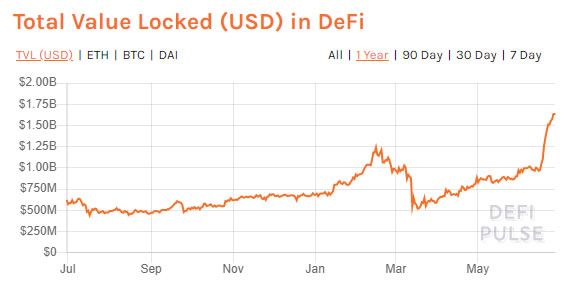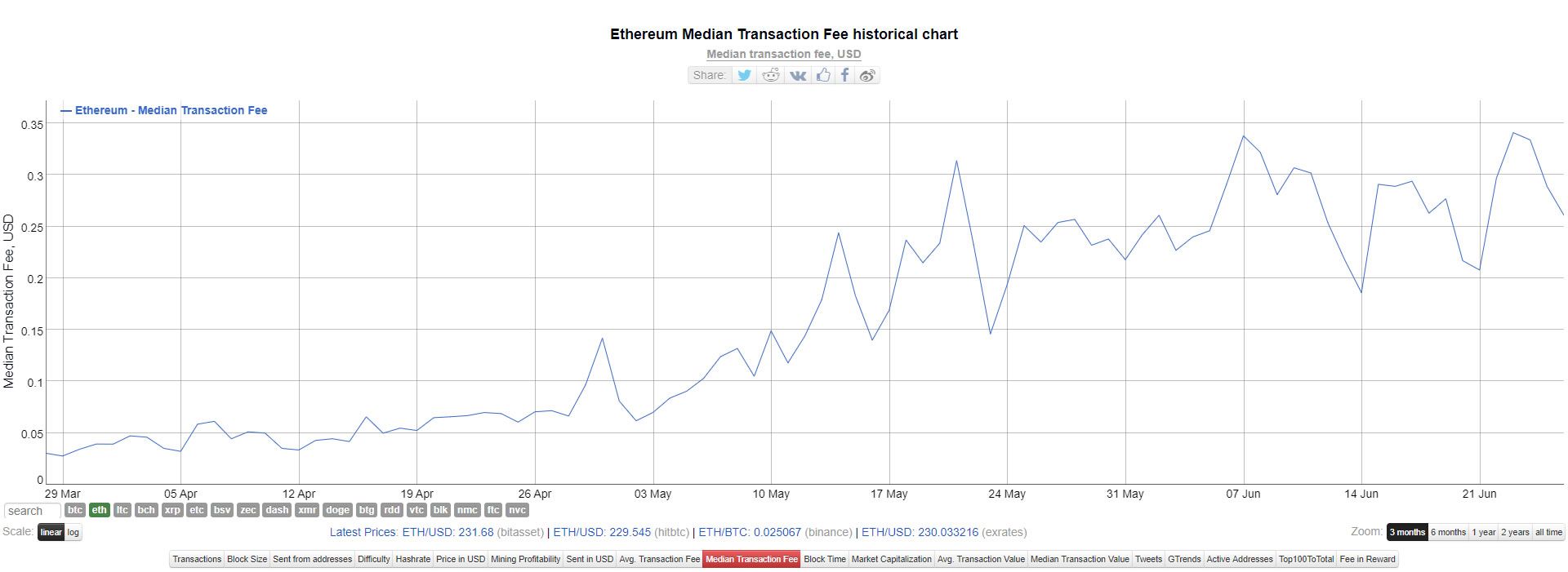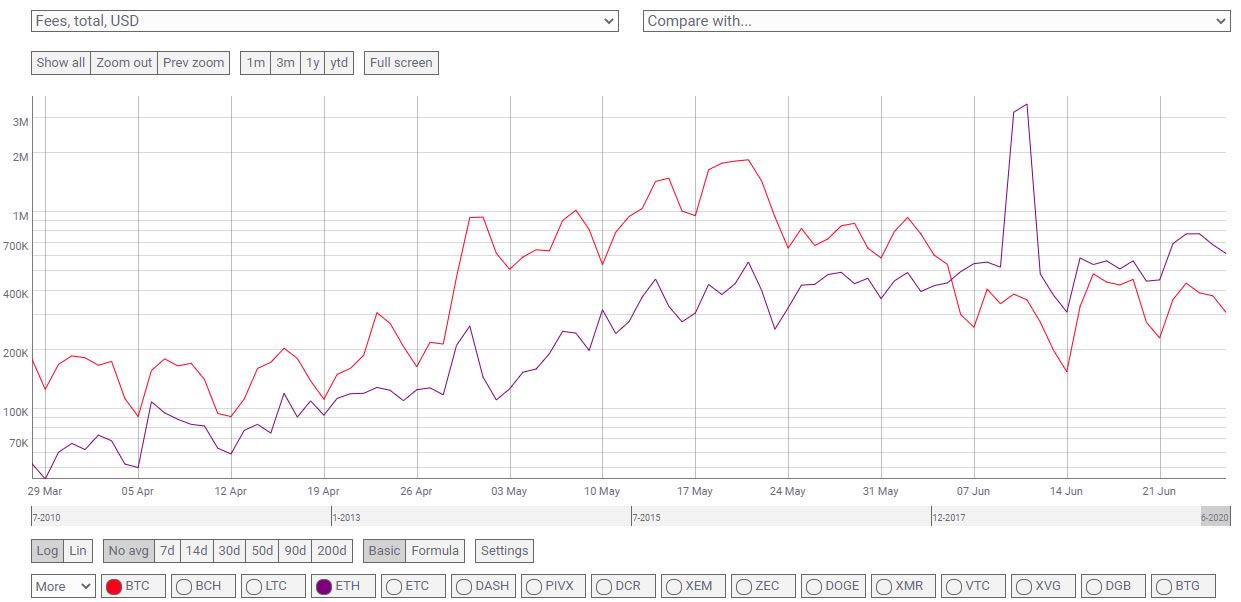This week in decentralized finance yielded bountiful opportunities for crypto whales to make profits. The downside of all the increased activity, however, was further pressure on the Ethereum network.
DeFi has definitely dominated the crypto news cycle this week thanks to a new all-time high in terms of total valued locked (TVL). Several tokens have mooned following the new liquidity mining incentives.
Ethereum, meanwhile, has dropped 7% since mid-week. Network fees continue to increase making most of the minor DeFi operations on the network financially unfeasible.
This Week in DeFi
On Friday a new all-time high of $1.65 billion was reached for total value locked across all DeFi platforms according to DeFi Pulse.
What the Experts Have to Say
Compound Finance CEO, Robert Leshner [@rleshner], explained the higher collateral figures for the platform:“There is now $1 Billion supplied to the Compound protocol. Excited for $COMP holders to expand & upgrade Compound, taking it past the next major milestone,”Decentralized options marketplace, Opyn, recently launched put options on COMP, allowing traders to have a safety net for losses below a certain threshold. Opyn tweeted that ETH put options were also available:
“Put option protection provides security against volatility & flash crashes. When you purchase protection, you buy an oToken, giving you the right to sell your asset (eg. ETH, COMP) at the strike price no matter what its market price is. These oTokens cap your downside.”Noting the wild success of Compound Finance, other DeFi protocols were quick to launch their own governance-based liquidity farming incentives. Balancer is an automated market-maker built on Ethereum which allows anyone to create or add liquidity to customizable pools and earn trading fees. The platform began its own token distribution three weeks ago, and the first batch of BAL tokens was harvested this week resulting in a sharp price rise. From a seed price of $0.60, BAL surged to over $17 on Thursday before pulling back to around $13.20, where they currently trade according to Uniswap.info. The buying interest has propelled the DeFi protocol up the charts to take the fourth spot in TVL, just ahead of Aave. Balancer saw its own TVL spike from under $40 million to an all-time high of around $110 million.
Newcomers on the Block(chain)
All eyes are now on the next two DeFi heavyweights as the liquidity wars heat up. Uniswap and Aave have been quiet so far but are no doubt working on their own tokens and liquidity mining programs. Other smaller platforms are already jumping aboard the yield farming bandwagon. Synthetix, Ren Protocol, and Curve have teamed up to launch a new incentivized liquidity pool on Curve for tokenized Bitcoin. According to the announcement, the pool consists of three BTC ERC-20 variants: renBTC, WBTC, and sBTC. It aims to create the most liquid Ethereum-based Bitcoin operation available. Kyber’s Katalyst upgrade is also one to watch out for. Katalyst will allow KNC token holders to vote on governance proposals and earn ETH. It appears that every DeFi protocol will need to implement these liquidity mining programs if they want to survive.Ethereum Under Pressure
The increased activity in the decentralized finance world has taken a toll on the foundation of its ecosystem. Ethereum scalability has always been a problem for the network and it’s starting to show again. According to Bitinfocharts.com, Ethereum transactions are at their second-highest level, surging over a million this week. The last time they were higher was at the tail end of the crypto boom in January 2018. ETH also happened to hit an all-time price peak of over $1,400. A knock-on effect of all of this is the surge in transaction fees. The average fee spiked to over $4 earlier this month. Since early May, the median transaction fee on the network has increased by 400%. This makes smaller DeFi transactions unfeasible since every transaction requires at least some amount of gas.
“Just tried to swap stablecoins on Uniswap would have been over $300 loss on the trade. Same trade on an exchange was $6 including withdrawal fees. DeFi has come along way, but we still have a long way to go to close the gap. Let’s not get complacent!”Earlier this week, BeInCrypto experimented with a collection of COMP earned by depositing crypto collateral onto the Compound platform. Claiming $15 worth of COMP tokens cost over $11 in gas fees. Swapping stablecoins such as Tether to DAI on Uniswap also ate around 3% in network and transfer fees.
Defi Supply and Demand
According to Coinmetrics, Ethereum network fees are currently higher than Bitcoin’s, and they have been for most of the month. The last time Ethereum’s fees were above those of Bitcoin was for two weeks running in July 2018.
Top crypto platforms in the US
Disclaimer
In adherence to the Trust Project guidelines, BeInCrypto is committed to unbiased, transparent reporting. This news article aims to provide accurate, timely information. However, readers are advised to verify facts independently and consult with a professional before making any decisions based on this content. Please note that our Terms and Conditions, Privacy Policy, and Disclaimers have been updated.

Martin Young
Martin Young is a seasoned cryptocurrency journalist and editor with over 7 years of experience covering the latest news and trends in the digital asset space. He is passionate about making complex blockchain, fintech, and macroeconomics concepts understandable for mainstream audiences.
Martin has been featured in top finance, technology, and crypto publications including BeInCrypto, CoinTelegraph, NewsBTC, FX Empire, and Asia Times. His articles provide an in-depth analysis of...
Martin Young is a seasoned cryptocurrency journalist and editor with over 7 years of experience covering the latest news and trends in the digital asset space. He is passionate about making complex blockchain, fintech, and macroeconomics concepts understandable for mainstream audiences.
Martin has been featured in top finance, technology, and crypto publications including BeInCrypto, CoinTelegraph, NewsBTC, FX Empire, and Asia Times. His articles provide an in-depth analysis of...
READ FULL BIO
Sponsored
Sponsored
